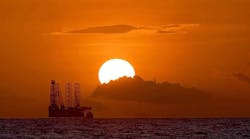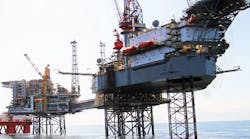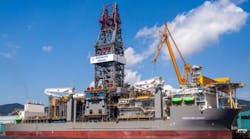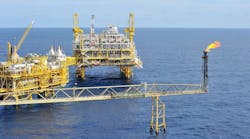Offshore and onshore drilling costs in the next century will be shaped by drilling activity, oil and gas prices, decline in available rigs, rig replacement costs, need for more advanced equipment in deepwater, and more efficient drilling. Drilling costs account for 40% of the natural gas exploration and development costs offshore, and about 33% onshore.
John Cochener of the Gas Resarch Institute in Chicago conducted correlation studies on the six categories, and released a report in May outlining the results. While all of the six factors vary or cycle periodically, the one that represents a highest degree of uncertainty is technology, particularly downhole, and particularly offshore. His conclusions were as follows:
- Drilling activity (high correlation): There was a high correlation here - changes in drilling account for 70% of the changes in drilling costs.
- Oil and gas prices (direct correlation): High prices mean more difficult, deeper, and costlier wells, driving up drilling costs.
- Availability of rigs: Tighter rig markets pushes up day rates, in turn pushing up drilling costs.
- Rig replacement costs: When rig market pressures induce new rig construction, day rates rise accordingly, pushing up drilling costs.
- Greater capability: New and upgraded deep and deepwater drilling capability, particularly offshore, push up day rates substantially, which in turn drives up drilling costs.
- Advanced technology content: More efficient drilling units drill faster in less time, and cost more. The commensurately higher equipment costs are somewhat countered by greater drilling efficiency, but not totally.
Spending for offshore and onshore drilling in the US has ranged from $9.8 billion up to $16.4 billion over the past 10 years. The spending variations are a product of both drilling activity as well as the cost of drilling. Changes in total drilling footage make up about 70% of drilling spending.
Other factors
There are other factors that play a significant role in offshore and onshore well costs.
- Well depth: Drilling costs rise exponentially with well depth. There are fixed costs associated with drilling shallower wells, which when spread over greater footage, lower the total cost.
- Drilling success ratio: Boosting the success rate in drilling is another significant factor. Three-dimensional seismic is probably the most influential factor here.
Trend analysis
A regression analysis on drilling cost factors was conducted by Cochener using wellhead oil and gas prices and the Baker Hughes rig count. "These basic regressions capture most of the variability in drilling cost per foot since 1970, with the regression R-squares (R2) ranging from 0.87 to 0.94 for the onshore depth categories, and 0.80 for offshore drilling."
R-squares measures the drilling cost fluctuation (amount of variation in the dependent variable) that can be attributed to by oil and gas prices and rig counts (independent variable). Cochener says the regressions show particular sensitivity to oil and gas prices.
"In the longer term, drilling costs should be capped by the cost of building and operating new drilling rigs, and should not fall below the variable costs (including drill pipe and machinery replacement) of operating existing rigs," Cochener stated.
Thus, variable costs are the cost floor for onshore and offshore rigs. "Reduced maintenance and rig cannibalization could allow a reduction in calculated day rates by as much as 25% on a short-term basis."
Projections
"GRI is projecting steadily increasing natural gas production at relatively stable gas prices," Cochener stated, referring to US production and prices. "The growth in production is expected to be achieved without a siginificant increase in total drilling expenditures due to improvements in drill efficiency and success rates." Cochener made several points in conclusion:
- "The increase in natural gas E&P success needed to meet the growth in natural gas demand will be met through a combination of offshore drilling, improvements in the drilling success rate, and well productivity improvements from new technology."
- "Improvements in drilling rig efficiency are expected to offset the growth in drilling footage."
- "The average cost per foot of drilling offshore wells is expected to remain relatively flat over time. There is a slight per foot cost variation for the average of all water depths during the projection period due to changes in the average water depth of the attempted wells."
- "The average depth for offshore drilling is expected to increase over time due to an increase in deepwater and ultra-deepwater drilling. The share of ultra-deepwater drilling is expected to rapidly increase from 3% of total offshore activity in 2000 before leveling off after 2010 at about 22 - 24%."
- "The average costs of drilling at a specific water depth is expected to decrease over time due to improvements in technology."
Reference
"U.S. Oil and Gas Drilling Costs: Historical Trends and a Look Into the New Millennium," GRI-98/0137, Gas Research Institute, May 1999 (E-mail:www.gri.org).







